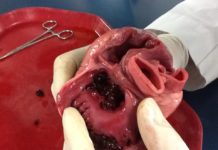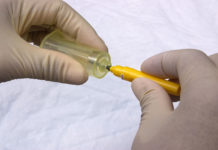
That vigorous exercise can slow down the progress of Parkinson’s Disease has been known but researchers from the University of Colorado have shown for the first time that the mechanism for this effect may lie through the activation of a protective gene.
 Parkinson’s is a disease caused by the death of brain cells that make a critical chemical called dopamine. Without dopamine, voluntary movement is impossible. Most people with Parkinson’s disease take a drug called L-DOPA to treat their symptoms. The oral drug is converted into dopamine in the brain allowing patients to get up and move.
Parkinson’s is a disease caused by the death of brain cells that make a critical chemical called dopamine. Without dopamine, voluntary movement is impossible. Most people with Parkinson’s disease take a drug called L-DOPA to treat their symptoms. The oral drug is converted into dopamine in the brain allowing patients to get up and move.
Working on mice, researchers have shown that exercise on a running wheel can stop the accumulation of the protein alpha-synuclein in brain cells that are believed to play a central role in the brain cell death associated with Parkinson’s disease.
The study published in the journal PLOS ONE, was done by Wenbo Zhou, research associate professor of medicine and Curt Freed, professor of medicine and division head of the Division of Clinical Pharmacology and Toxicology at the CU School of Medicine.

The mice in the study, like humans, started to get Parkinson’s symptoms in mid-life. At 12 months of age, running wheels were put in their cages. “After three months, the running animals showed much better movement and cognitive function compared to control transgenic animals which had locked running wheels,” Zhou said.
Inthe running mice, exercise increased brain and muscle expression of a key protective gene called DJ-1. Those rare humans born with a mutation in their DJ-1 gene are guaranteed to get severe Parkinson’s at a relatively young age. The researchers tested mice that were missing the DJ-1 gene and discovered that their ability to run had severely declined, suggesting that the DJ-1 protein is required for normal movement.
“Our results indicate that exercise may slow the progression of Parkinson’s disease by turning on the protective gene DJ-1 and thereby preventing abnormal protein accumulation in brain,” Freed said.
He explained that his animal experiments had very real implications for humans.
“Our experiments show that exercise can get to the heart of the problem in Parkinson’s disease. People with Parkinson’s who exercise are likely able to keep their brain cells from dying,” Freed said.












